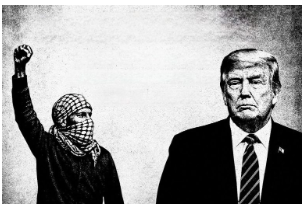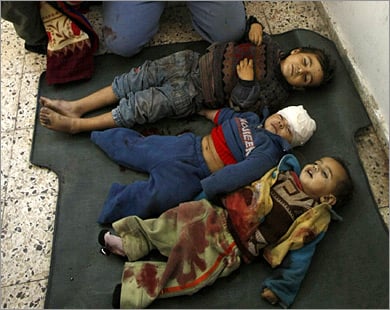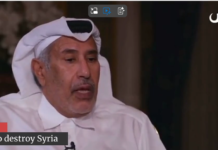Restoration is not symbolic. It is material, legal, and historical. Justice is the return of what Israel, the colonizer and occupier, took.
Original Link Here: Inverting Reality: The Optics of Trump’s “Peace” Plan. A Powerful Message From Palestine – Global ResearchGlobal Research – Centre for Research on Globalization
Introduction: Fractured Optics and the Need for Clarity
The ceasefire and prisoner exchange have burst onto our screens in a confusing array of images and clashing narrative frames, with commentators interpreting events differently depending on their geographic and political vantage points.
 This essay analyzes the visual and rhetorical strategies surrounding the October 2025 prisoner exchange between Palestinian resistance factions and Israel, Donald Trump’s speech to the Israeli Knesset, and the summit in Sharm al-Shaikh. It exposes how optics are weaponized to invert reality — casting colonizers as peacemakers and resistance as terror — while suppressing Palestinian suffering, agency, and return. Through detailed critique of terminology, media choreography, and civilizational framing, the essay argues that these narratives enable impunity, obscure structural violence, and foreclose justice. It calls for dismantling not through counter-spectacle, but through restoration of what rightfully belongs to Palestinians.
This essay analyzes the visual and rhetorical strategies surrounding the October 2025 prisoner exchange between Palestinian resistance factions and Israel, Donald Trump’s speech to the Israeli Knesset, and the summit in Sharm al-Shaikh. It exposes how optics are weaponized to invert reality — casting colonizers as peacemakers and resistance as terror — while suppressing Palestinian suffering, agency, and return. Through detailed critique of terminology, media choreography, and civilizational framing, the essay argues that these narratives enable impunity, obscure structural violence, and foreclose justice. It calls for dismantling not through counter-spectacle, but through restoration of what rightfully belongs to Palestinians.
Optics as Strategy: What Is Shown and What Is Suppressed
In politics, optics are not incidental — they are strategic. They shape public perception, frame moral legitimacy, and obscure the mechanisms of power. The October 2025 prisoner exchange between Palestinian resistance factions and the Israeli state, followed by the public ovations for Donald Trump and Benjamin Netanyahu in the Knesset and by Sharm al Sheikh’s summit posturing, offers a case study in how optics are deployed to convey “resolution” while concealing its reality as a threshold that names impunity, reframes resistance, and cracks the silence.
Terminology as Inversion: Hostages vs. Prisoners
The very terminology used to describe the exchange of captives on October 13 is itself an inversion of reality. Media and political leaders consistently refer to Israelis held in Gaza as “hostages,” while Palestinians released from Israeli jails are labeled “prisoners.” This framing creates a false moral distinction: one side is imagined as innocent civilians unjustly seized, while the other is cast as convicted criminals whose detention is presumed legitimate. In fact, both groups are people deprived of their liberty within the context of a violent conflict and an entrenched system of domination.
It is crucial to note that many of those described as “hostages” were not neutral civilians but members of the Israeli Defense Forces (IDF) or otherwise engaged in military operations that form part of Israel’s ongoing aggression against Palestinians. This distinction matters not only for understanding the nature of the exchange, but for interrogating the broader structure of complicity within what is often described as Israel’s “democracy.”
In Israel, military service is compulsory for Jewish citizens, with most serving in the IDF at age 18. This means that the majority of Israeli Jews are not merely passive observers of state violence — they are direct participants in its enforcement. Whether stationed at checkpoints, operating surveillance systems, or engaging in combat operations, conscripts are embedded in the machinery of occupation. Their service is not neutral; it is structurally tied to the containment, displacement, and erasure of Palestinians.
Complicity extends beyond the battlefield. In a system where governments are elected and policies are publicly debated, voting becomes a mechanism of endorsement. Successive Israeli governments — whether led by Netanyahu or his political rivals — have upheld Zionist frameworks that prioritize Jewish sovereignty over Palestinian rights. These governments have expanded settlements, maintained the blockade on Gaza, and legislated apartheid-like conditions through laws such as the Nation-State Law of 2018. The electorate’s consistent support for such policies reflects a societal consensus that accepts, and often demands, Palestinian dispossession as the price of national security and identity.
This is not to say that every Israeli Jew is ideologically aligned with these policies. There are dissenters, activists, and organizations that challenge the status quo. But structurally, the system is designed to absorb dissent without altering its foundational logic. The result is a democracy that functions for one population while systematically disenfranchising another. Palestinians under occupation cannot vote in the elections that determine their fate. Their lives are shaped by a government they did not choose, enforced by soldiers they did not summon, and narrated by media they cannot access.
To understand the prisoner exchange, then, is to understand that the captives described as “hostages” are often agents of a system that imprisons, surveils, and kills. Their capture is not an aberration — it is a consequence. And the society that mourns them while ignoring the suffering of those they helped subjugate is not innocent. It is implicated.
Their capture occurred in the context of armed confrontation, not random abduction. On the other side, many of the Palestinians released were minors, political detainees, or individuals held under “administrative detention” without charge or trial — conditions that international human rights organizations have long condemned as violations of international law.
When we strip away the rhetorical asymmetry, what occurred was not “hostages for prisoners” but an exchange of prisoners. Both sides were holding captives, and both agreed to release them under coercive circumstances. Calling only one side’s captives “hostages” hides the deep imbalance of power and normalizes Israel’s carceral system — a vast network of confinement and control that goes beyond prisons to include surveillance, restriction, and domination. It recasts colonial violence as routine governance, erasing the reality of systemic oppression.
By narrating the exchange as unilateral victory, the discourse erases the fact that Israel, as the occupying power, maintains tens of thousands of Palestinians in its prisons and detention centers, while Palestinians in Gaza held a far smaller number of Israelis, many of them combatants, in response to ongoing siege and military assault.
In this way, the terminology itself — “hostages” versus “prisoners” — functions as a discursive weapon. It obscures the reality of mass incarceration and subjugation under occupation, while elevating Israeli captives as the sole moral reference point. The effect is to mask asymmetry as parity, and then to narrate the outcome as if it were Israel’s earned triumph rather than a reciprocal exchange forced by the balance of coercion.
The Architecture of Incarceration
Since 1967, Israel has arrested over one million Palestinians — an average of 47 per day for nearly six decades. Yet the prison population rarely exceeds 6,000 at any given time, revealing a system not built for containment, but for circulation: a revolving door of trauma, fragmentation, and control. As of May 2025, over 10,000 Palestinians were held in Israeli prisons, with only 1,455 sentenced. The rest — over 6,700 — languished in legal limbo: awaiting trial or held under administrative detention without charge.
Suppressing the Optics of Survival: Israeli Captives and Media Control
Unlike previous exchanges — most notably the 2011 Gilad Shalit deal — Netanyahu’s government actively restricted how the released Israeli captives were received. Officials limited media coverage, discouraged public gatherings, and instructed families to avoid spectacle. While the government cited medical and psychological concerns as justification, the timing and contrast reveal a deeper motive: to suppress the impact of the visual evidence that Israeli captives had survived Palestinian captivity.
This restraint stands in stark contrast to the optics emerging from Gaza just before the release. On October 13, Al Qassam Brigades released a video clip showing one of the Israeli captives standing beside a masked fighter, calmly communicating with his family via mobile phone. The footage, filmed from behind the family as they held the device, captured the captive’s face on screen alongside the Al Qassam member — composed, unrestrained, and clearly under the group’s protection. The message was unmistakable: Al Qassam was in control, not only of the captive’s safety but of the narrative. The scene conveyed discipline, operational coherence, and a level of restraint that directly contradicted the dominant portrayal of Palestinian fighters as indiscriminately violent.
To show survival in this way would be to admit that Palestinian factions exercised care, that they distinguished between combat and cruelty, and that they upheld a code of conduct even under siege. It would also mean acknowledging the astonishing resilience and military craftsmanship required to keep captives alive amid relentless bombardment, infrastructural collapse, and siege conditions. These images reveal the moral contradiction of a state that calls its actions self-defense while stripping away the humanity of those it cages, bombs, and surrounds.
By suppressing these optics, the Israeli government preserved a narrative architecture in which Palestinian resistance is always terror, and Israeli suffering is always sanctified. Survival, in this context, is not just a biological fact — it is a political threat.
Erasure of Palestinian Return
In contrast to the tightly choreographed reception of Israeli captives, the return of Palestinian prisoners — many held for decades under administrative detention — was met with minimal coverage in Israeli media. Their names, faces, and stories were largely omitted. No televised reunions, no interviews, no national reflection. This erasure is consistent with Israel’s broader carceral strategy , which seeks not only to imprison but to decontextualize and dehumanize. The optics of Palestinian return are suppressed because they challenge the framing of prisoners as threats rather than political subjects.
Yet the numbers and scenes defy invisibility. On October 13, Israel released 1,968 Palestinians under the ceasefire agreement, including 96 political prisoners and over 1,700 detainees taken from Gaza and the West Bank during the war. Among those released were:
- Mohammed Abu Khdeir, a youth activist from Jerusalem detained without trial since 2021.
- Alaa al-Din al-Husseini, a community organizer from Khan Younis held under administrative detention for over seven years.
- Samira Abu Jaber, one of the few women released, imprisoned since 2018 for organizing protests in Nablus.
- Yousef al-Khatib, a former student leader from Birzeit University, held since 2020 for alleged incitement on social media.
In Beitunia, West Bank, and Khan Younis, Gaza, thousands gathered to welcome them. Crowds erupted in cheers as buses arrived, many waving flags and flashing V-for-victory signs. In Beitunia, released prisoners were wrapped in keffiyehs — symbols of resistance and pride — and lifted onto shoulders. In Khan Younis, buses parked outside Nasser Hospital became sites of reunion, with families pressing against windows to glimpse those inside. One viral clip showed a released prisoner dancing outside the hospital, surrounded by cheering relatives.
Palestinian media documented these moments with clarity and reverence. Footage showed prisoners embracing relatives, stepping off buses with tears and raised fists, and being welcomed by crowds that had waited for hours. In Ramallah, families held photos of loved ones and chanted their names. These scenes conveyed not just joy, but endurance — proof that even amid siege and fragmentation, memory and solidarity persist.
And yet, these optics rarely penetrate international coverage. Western outlets focused on the release of Israeli captives, often relegating Palestinian return to a footnote. The imbalance is not accidental. It reflects a media architecture that privileges Israeli grief and suppresses Palestinian resilience. To show the return of prisoners is to acknowledge their humanity, their suffering, and their political significance. It is to admit that the carceral system is not neutral, but ideological. And that admission remains too inconvenient for the dominant narrative.
The Knesset Ovation: Applause for Delay
 The most jarring optic came when Donald Trump and Benjamin Netanyahu received standing ovations for “ending the war” during Trump’s speech to the Israeli Knesset on October 13, 2025. The chamber erupted as Trump declared, “This is not only the end of a war, this is the end of an age of terror and death and the beginning of the age of faith and hope and of God.”
The most jarring optic came when Donald Trump and Benjamin Netanyahu received standing ovations for “ending the war” during Trump’s speech to the Israeli Knesset on October 13, 2025. The chamber erupted as Trump declared, “This is not only the end of a war, this is the end of an age of terror and death and the beginning of the age of faith and hope and of God.”
Trump’s declaration at the Knesset — framing the Gaza ceasefire as the “end of an age of terror” and the “beginning of the age of faith” — relies on theological and civilizational binaries that obscure the material asymmetries of the conflict. By invoking “God” and “hope” while omitting any reckoning with genocide, occupation, displacement, or Palestinian suffering, the speech performs closure without accountability.
Netanyahu, flanked by coalition members and opposition figures alike, was praised as “one of the great wartime presidents” and urged to be pardoned for corruption charges.
Netanyahu, Trump at the White House (right)
The image and words conveyed resolution, leadership, and closure to Israelis. But they concealed the chronology: that the war could have ended in 2023, when the same exchange terms — release of Israeli captives in Gaza in return for Palestinian prisoners and detainees — were first proposed by resistance factions. That the Israeli government refused to negotiate, prolonging the war for two years. That the applause was not for peace, but for delayed concession.
By October 13, 2025, the cost of delay was staggering. Over 36,000 Palestinians had been killed, tens of thousands displaced, and Gaza’s infrastructure reduced to rubble. The final exchange involved 20 surviving Israeli captives and nearly 2,000 Palestinian prisoners and detainees, including 250 held on “security” charges and 1,700 detained without trial. Yet the Knesset audience applauded as if the outcome were a triumph of diplomacy rather than a coerced resolution to a war that could have ended before it began.
The ovation reframed tactical retreat as strategic brilliance. It hallowed Israeli grief while omitting Palestinian suffering. It celebrated the return of Israeli captives — “to the glorious embrace of their families,” as Trump put it — while ignoring the fact that their survival was made possible by the very factions excluded from the summit and vilified in the speech. The applause did not mark the end of war. It marked the successful rebranding of delay, devastation, and asymmetry as statesmanship.
Trump’s Knesset Speech: Inversion as Doctrine
If the Knesset ovation was the theatrical apex of civilizational self-congratulation, Trump’s speech functioned as its doctrinal codification.
The address sanctified Israeli grief, with Trump describing so-called “hostages” coming home to the “glorious embrace of their families” and the burial of others in “this sacred soil for all of time.”
In this framing, Israel’s pain is positioned as morally redemptive, while Palestinians appear, at most, as a logistical backdrop to the exchange. Palestinian suffering that precedes and exceeds the exchange of prisoners is not denied outright; it is reclassified as logistical detail, stripped of ethical weight and political urgency.
Trump’s call for President Herzog to pardon Prime Minister Netanyahu refers to Netanyahu’s ongoing corruption trial, which includes charges of fraud, breach of trust, and bribery. Specifically, Netanyahu and his wife Sara are accused of accepting over $260,000 worth of luxury gifts, including cigars, champagne, and jewelry, from wealthy businessmen in exchange for political favors and regulatory benefits.
By dismissing these allegations as trivial — “Who cares about cigars and champagne?” — Trump reframes corruption as inconsequential in the context of wartime leadership. His comment implies that Netanyahu’s role in the war and the prisoner exchange overshadows the need for legal accountability, suggesting that wartime valor should absolve peacetime misconduct.
This rhetorical indulgence stands in stark contrast to Trump’s remarks about the Palestinian Authority, which he described as “corrupt, broken, and incapable of peace” during his Knesset address. The juxtaposition is telling: Netanyahu’s corruption is forgiven as patriotic excess, while the PA’s dysfunction is weaponized to delegitimize Palestinian governance altogether. One is excused, the other condemned.
Trump reframes reciprocity as generosity. In his speech, he presents the exchange of hostages and prisoners — negotiated under coercion and shaped by deep asymmetry — as a benevolent act by Israel. He ignores the fact that both sides held captives and both made concessions. Instead, he casts Israel’s participation as moral magnanimity, erasing the reality of mutual leverage and structural imbalance.
By doing so, Trump turns a forced compromise into a triumph of virtue, Western civilizational virtue, softening the truth of mass incarceration, siege, and demographic control. His rhetoric transforms domination into goodwill, and in doing so, conceals the violence that made the exchange necessary in the first place.
Trump’s address does not merely mislabel resistance as terror; It reshapes how resistance is morally understood — turning struggle into threat, and justice into disorder. By treating the outcome as a moral victory, it normalizes Israel’s systems of control — borders, permits, prisons, surveillance — as ordinary governance rather than colonial instruments.
Finally, Trump’s implicit “build on your win” logic signals continuity. It is not a call for closure but for entrenchment. Leverage the moment, the speech suggests, to harden territorial, legal, and political gains. The exchange becomes a springboard — not for reconciliation or parity — but for further consolidation. Any pathway to equality is subordinated to the imperative of securing the dominant position. In this schema, peace is not mutual recognition — it is the pacification of the colonized.
Sharm al-Sheikh: The Summit as Spectacle and Strategic Erasure
The Sharm al-Sheikh summit on October 13, 2025 was carefully choreographed to project closure and control. Co-chaired by Donald Trump and Egyptian President Abdel Fattah el-Sisi, and attended by leaders from 27 countries, the event was staged as a moment of unity and triumph. The stage design, seating arrangements, and ceremonial gestures reinforced the image of Western and regional powers delivering peace to a grateful region.
Trump stood at the center, flanked by allies, receiving Egypt’s highest honorand declaring the ceasefire “a sacred day” and “the answer to the prayers of millions.” His speech described the moment as “a new beginning for an entire, beautiful Middle East,” casting the outcome not as a compromise shaped by resistance and mediation, but as a historic achievement led by those who had shaped — and prolonged — the war.
Trump’s speech presented the ceasefire as a moral victory led by Western and regional powers. He used phrases like “sacred day” and “answer to the prayers of millions” to portray the outcome as a moment of divine and civilizational achievement. This framing gave credit to the states that brokered the deal while ignoring the role of Palestinian resistance and the conditions that forced the exchange. It reinforced the authority of those who shaped the war’s trajectory and excluded those most affected by it.
Trump deliberately failed to recognize the role of Hamas, which led the negotiations and held the majority of Israeli captives, or the involvement of other factions such as Palestinian Islamic Jihad (PIJ) and the Popular Front for the Liberation of Palestine (PFLP).
We saw them arrive. The negotiators — Hamas officials, flanked by Egyptian intermediaries — entered Cairo under tight security, carrying the weight of a war they did not start but were forced to end. Their presence was real, documented, and deliberate. Yet at Sharm al-Sheikh, they were nowhere. Not named, not acknowledged, not invited.
The very actors who preserved life under siege, who forced the exchange, who negotiated under bombardment — were erased from the summit’s choreography. Their absence signaled that survival under siege, strategic negotiation, and political coherence remain inadmissible in the dominant frame.
Instead, Trump praised Egypt, Qatar, and Turkey for their mediation, cast Israel as resilient and restrained, and urged further regional normalization through the Abraham Accords. His language was sweeping — “a new beginning,” “a tremendous day for the world” — but the omissions were sharper than the declarations.
The attending states played supporting roles in this choreography. Egypt and Qatar, while instrumental in brokering the ceasefire, were framed as facilitators of Trump’s vision, not as advocates for Palestinian sovereignty. Turkey’s presence signaled pragmatic alignment, not ideological solidarity. Gulf states used the summit to reaffirm their commitment to regional stability, signaling that economic reconstruction and diplomatic normalization would proceed without confronting Israeli impunity. Their participation endorsed a post-war order in which containment replaces liberation, and visibility substitutes for accountability.
Netanyahu’s absence was not incidental — it was strategic. Facing domestic backlash and ongoing corruption trials, his non-attendance allowed Trump to speak on Israel’s behalf without the burden of political baggage.
Ignoring Netanyahu’s indictment as a war criminal by the ICC, the summit enabled a cleaner narrative: Israel as dignified, wounded, and magnanimous, rather than embattled, divided, and culpable. By omitting Netanyahu, the summit avoided the optics of scandal, dissent, and butchery, allowing Trump to universalize Israeli interests without friction.
In sum, Sharm al-Sheikh was not a site of reconciliation — it was a mechanism of narrative consolidation. It allowed Trump to sanctify his role, regional states to signal alignment, Israel to retain moral authority, and Palestinian resistance to be erased. The summit did not end Israel’s rapaciousness — it rebranded its architecture.
Beyond Optics: The Day After for Palestine; for Israel
Together, these optics form more than a media spectacle — they constitute a narrative infrastructure. They determine who is seen, who is heard, and who is erased. They allow states to claim moral high ground while suppressing inconvenient truths.
For Palestine, the day after as planned by the US and Israel is a continuation of siege, displacement, and juridical erasure. The framing of Trump’s speech forecloses the possibility of redress by rendering Palestinian suffering as either incidental or deserved. It strips resistance of its political logic, recasting it instead as a symptom of dysfunction or deviance. The colonized are not just silenced — they are re-scripted as threats to peace, obstacles to progress, and relics of a past that must be overcome.
For Israel, the day after is a moment of consolidation beyond optics. Trump’s speech does not merely celebrate a tactical exchange — it elevates Israel’s trajectory into a sacred civilizational narrative. It licenses further entrenchment: territorial expansion, juridical impunity, and the normalization of apartheid governance. Rather than hiding power, the optics put it to work. They convert narrative into structural power, enabling Israel to operate without accountability while presenting itself as victim, savior, and civilizational model.
Palestinians will continue to demand the return of what history confirms is theirs. This is not a struggle for visibility — the world has already shown up, with millions marching in solidarity. It is a fight for land, dignity, political agency, and the right to tell their own story. It refuses to be boxed into dominant narratives or erased by deceptive rhetoric.
Restoration is not symbolic. It is material, legal, and historical. Justice, here, is not a performance — it is the return of what Israel, the colonizer and occupier, took.
*
Click the share button below to email/forward this article. Follow us on Instagram and X and subscribe to our Telegram Channel. Feel free to repost Global Research articles with proper attribution.
Rima Najjar is a Palestinian whose father’s side of the family comes from the forcibly depopulated village of Lifta on the western outskirts of Jerusalem and whose mother’s side of the family is from Ijzim, south of Haifa. She is an activist, researcher, and retired professor of English literature, Al-Quds University, occupied West Bank. Visit the author’s blog.
She is a Research Associate of the Centre for Research on Globalization (CRG).
Featured image is from the author
Global Research is a reader-funded media. We do not accept any funding from corporations or governments. Help us stay afloat. Click the image below to make a one-time or recurring donation.





















